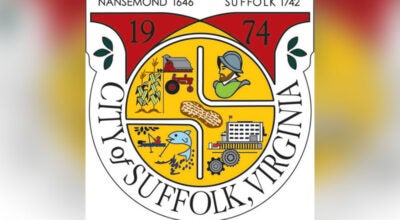Teacher assistants offer a hand in schools
Published 10:42 pm Friday, January 6, 2012
Gone are the days of teacher assistants handing out snacks and designing bulletin boards.
Throughout Suffolk, dozens of teacher assistants work to reinforce lessons, be an extra instructor during remediation or assist students with special needs at every one of the schools.
While some of the assistants can be placed in classrooms with large student numbers, the main purpose for most of them is to help with specific needs, according to school officials.
Leigh Bennett, human resources director for Suffolk Public Schools, said teacher assistants are used in the schools for three main reasons.
“It’s either dictated by individualized education plans, dictated by Title I requirements, or by student population numbers,” she said. “We have different types of teacher assistants.”
Unlike teachers, the teacher assistants in Suffolk are paid depending on their duties, Bennett said.
For example, if a teacher assistant is assigned to special education, then the funding for special education pays for the position.
Bennett said it is a misconception that teacher assistants are used exclusively when a class gets too large.
Rather than be an extra pair of hands, she said, general education assistants are used to help reinforce concepts and lessons.
“Many times it helps for a TA to be in the room because the teacher is doing a lot of one on one with struggling readers while a TA can help monitor and make sure everyone is doing what they are supposed to do,” she said.
However, Bennett said, it is ultimately up to the school to decide how to use their assistants.
At Florence Bowser, there are 14 teacher assistants trained to help out.
Principal Frances Barnes said many of the school’s assistants have specific roles and cannot be moved, such as the assistants for special education and Early Start classes.
Of the general education assistants, who can be moved around, most spend their time in kindergarten classrooms.
“They are able to stay there most of the day,” Barnes said. “When the children go to resource, they might help with review in a first grade class or have another assignment.”
Barnes said she thinks Florence Bowser is fortunate because with only three grade levels, the assistants are more easily utilized.
“It’s probably more difficult in a school that’s bigger and has the upper grades,” she said.
Hillpoint Elementary School principal Ronald Leigh knows the difficulties firsthand.
With the second most populated school in Suffolk, there are 23 teacher assistants, but Leigh said only about nine of those assistants can be used for multiple purposes.
“It’s really hard because there are a lot of needs and as a principal you have to have a needs assessment,” he said. “You have to look at where they are needed the most.”
Leigh said one of the biggest challenges is ensuring the upper grades get help because they have some of the largest class sizes.
“When you have 29, 30 kids, the paraprofessionals can’t be there all the time,” he said.
Regardless of the challenges, both Barnes and Leigh said, they feel like their assistants do a great job helping the teachers.
Barnes said the main goal for the teacher assistants, no matter what their assignment, is to support teachers in their instruction.
“In the old days, an assistant might just put up a bulletin board, but they are truly instructional assistants,” she said. “We count on them to be a big part of instructional process.”






